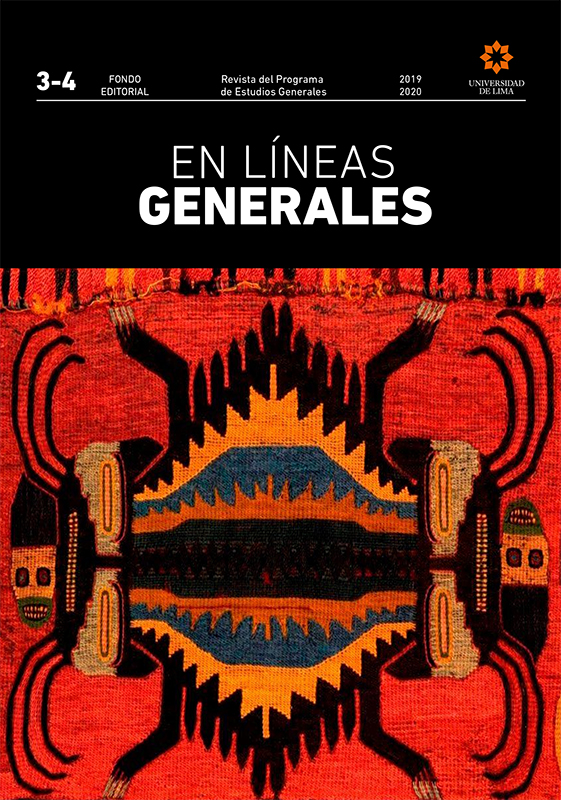Contexts and interculturalities. A conceptual journey through contemporary peruvian art
DOI:
https://doi.org/10.26439/en.lineas.generales2020.n3-4.5083Keywords:
intertextuality, referent, enunciation, appropriation, re-signification, Peruvian artAbstract
Intertextuality in contemporary Peruvian art is a constant whose value goes beyond the use of a mechanism of appropriation and re-signification of cultural references. The networks established between the sacred and the profane, the past and the present, the local and the global, for instance, generate often discourses controversial and transgressive around the cultural identity of the artist and the culture that he or she represents. It also raises questions about the status of art in the current context and its epistemological approach. In Peru, there are several artists who develop intertextualities that attempt to include the spectators in scenarios and interactions whose speeches appeal to their memory to undermine their stereotypes and reconstruct nuclear representations for the configuration of identity. Analyzing the frequency and implications of this phenomenon articulates art to history and relates it to the creation of knowledge and languages. There are consequences in the perception of reality and its future: art develops a critical vocation from the everyday, seizing signs to suggest an active co-enunciation, supplied by the contents and icons of the collective memory of the community.
Downloads
References
Albuquerque, I. R. de (2014). O corpo como soporte privilegiado de ornamento. Estudio, 5(9), 94-102.
Bajtín, M. (1991). Estética y teoría de la novela. Madrid: Taurus.
Bataille, G. (1987). La parte maldita. Barcelona: Editorial Icaria.
Bourriaud, N. (2006). Estética relacional. Buenos Aires: Adriana Hidalgo, editora.
Brea, J. L. (2002). La era postmedia. Acción comunicativa, prácticas (post)artísticas y dispositivos neomediales. Salamanca: CASA.
Connor, S. (2002). Cultura postmoderna. Introducción a las teorías de la contemporaneidad. Madrid: Akal.
Deleuze, G., y Guattari, F. (1991). Qu’est-ce que la philosophie? París: Minuit.
Floch, J.-M. (1995). Identités visuelles. París: PUF.
García Canclini, N. (2010). La sociedad sin relato. Antropología y estética de la inminencia. Buenos Aires: Katz Editores.
Genette, G. (2004) Metalepsis. De la figura a la ficción. Buenos Aires: Fondo de Cultura Económica.
Han, B.-C. (2012). La sociedad del cansancio. Barcelona: Herder Editorial.
Han, B.-C. (2017). La expulsión de lo distinto. Barcelona: Herder Editorial.
Husserl, E. (1992). Ideas relativas a una fenomenología pura y a una filosofía fenomenológica.
Ciudad de México: Fondo de Cultura Económica.
Landowski, E. (2007). Presencias del otro. Lima: Universidad de Lima, Fondo Editorial.
Landowski, E. (2009). Interacciones arriesgadas. Lima: Universidad de Lima, Fondo Editorial.
Parret, H. (2008). Epifanías de la presencia. Ensayos semio-estéticos. Lima: Universidad de Lima, Fondo Editorial.
Parsons, M. (2002). Cómo entendemos el arte. Barcelona: Paidós.
Semprini, A. (1992). El marketing de la marca. Una aproximación semiótica. Ciudad de México: Paidós.


